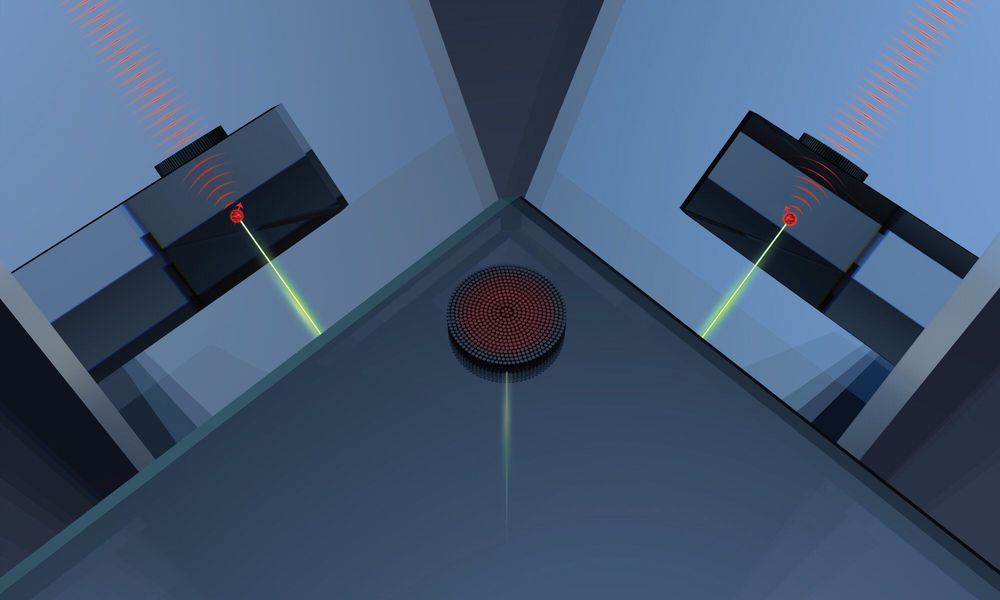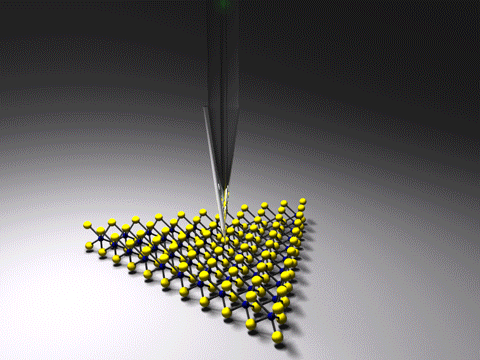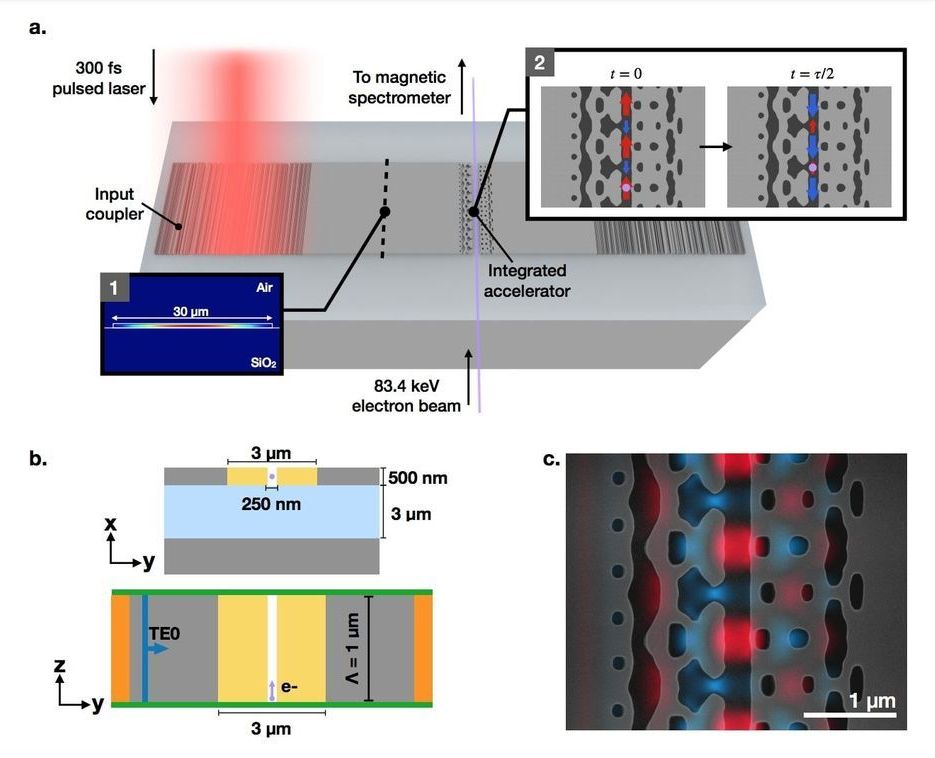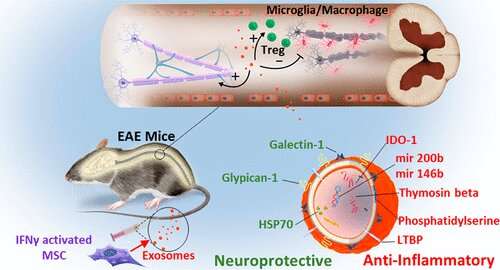With a lens-free makeover scanning near-field optical microscopes (SNOMs) could become a common lab tool.



At the chemical level, diamonds are no more than carbon atoms aligned in a precise, three-dimensional (3D) crystal lattice. However, even a seemingly flawless diamond contains defects: spots in that lattice where a carbon atom is missing or has been replaced by something else. Some of these defects are highly desirable; they trap individual electrons that can absorb or emit light, causing the various colors found in diamond gemstones and, more importantly, creating a platform for diverse quantum technologies for advanced computing, secure communication and precision sensing.
Quantum technologies are based on units of quantum information known as “qubits.” The spin of electrons are prime candidates to serve as qubits; unlike binary computing systems where data takes the form of only 0s or 1s, electron spin can represent information as 0, 1, or both simultaneously in a quantum superposition. Qubits from diamonds are of particular interest to quantum scientists because their quantum-mechanical properties, including superposition, exist at room temperature, unlike many other potential quantum resources.
The practical challenge of collecting information from a single atom deep inside a crystal is a daunting one, however. Penn Engineers addressed this problem in a recent study in which they devised a way to pattern the surface of a diamond that makes it easier to collect light from the defects inside. Called a metalens, this surface structure contains nanoscale features that bend and focus the light emitted by the defects, despite being effectively flat.

A team of researchers from the University of California at Berkeley and Lawrence Berkeley National Laboratory has found a way to make the Casimir effect attract or repulse depending on the size of the gap between two objects. In their paper published in the journal Science, the group describes their technique and possible applications.
The Casimir effect, first proposed by Hendrik Casimir back in 1948, is the phenomenon in which two tiny surfaces in close proximity experience a force that pulls them closer together. Quantum fluctuations inside and outside of the gap push against the plates, but because those pushing from the outside are stronger, they create an attractive force between the two plates. The Casimir effect is more than a curiosity, because it can create problems in nanotechnology applications.
Just two years after Casimir first proposed the effect, others in the field began making predictions about ways to counter it—making it repulsive rather than attractive, for example, in the case of fluids and plates made of lower refractive metals. Then, in 2010, a team at MIT suggested that it should be possible to counter both attractive and repulsive effects to create a state of equilibrium between the two plates. In this new effort, the researchers report that they have done just that.

In “Avengers: Endgame,” Tony Stark warned Scott Lang that sending him into the quantum realm and bringing him back would be a “billion-to-one cosmic fluke.”
In reality, shrinking a light beam to a nanometer-sized point to spy on quantum-scale light-matter interactions and retrieving the information is not any easier. Now, engineers at the University of California, Riverside, have developed a new technology to tunnel light into the quantum realm at an unprecedented efficiency.
In a Nature Photonics paper, a team led by Ruoxue Yan, an assistant professor of chemical and environmental engineering, and Ming Liu, an assistant professor of electrical and computer engineering, describe the world’s first portable, inexpensive, optical nanoscopy tool that integrates a glass optical fiber with a silver nanowire condenser. The device is a high-efficiency round-trip light tunnel that squeezes visible light to the very tip of the condenser to interact with molecules locally and send back information that can decipher and visualize the elusive nanoworld.

Dielectric laser accelerators (DLAs) provide a compact and cost-effective solution to this problem by driving accelerator nanostructures with visible or near-infrared (NIR) pulsed lasers, resulting in a 10,000 times reduction of scale. Current implementations of DLAs rely on free-space lasers directly incident on the accelerating structures, limiting the scalability and integrability of this technology. Researchers present the first experimental demonstration of a waveguide-integrated DLA, designed using a photonic inverse design approach. These on-chip devices accelerate sub-relativistic electrons of initial energy 83.4 keV by 1.21 keV over 30 µm, providing peak acceleration gradients of 40.3 MeV/m. This progress represents a significant step towards a completely integrated MeV-scale dielectric laser accelerator.
Dielectric laser accelerators have emerged as a promising alternative to conventional RF accelerators due to the large damage threshold of dielectric materials the commercial availability of powerful NIR femtosecond pulsed lasers, and the low-cost high-yield nanofabrication processes which produce them. Together, these advantages allow DLAs to make an impact in the development of applications such as tabletop free-electron-lasers, targeted cancer therapies, and compact imaging sources.
They have designed and experimentally verified the first waveguide-integrated DLA structure. The design of this structure was made possible through the use of photonics inverse design methodologies developed by the team members. The fabricated and experimentally demonstrated devices accelerate electrons of an initial energy of 83.4 keV by a maximum energy gain of 1.21 keV over 30 µm, demonstrating acceleration gradients of 40.3 MeV/m. In this integrated form, these devices can be cascaded to reach MeV-scale energies, capitalizing on the inherent scalability of photonic circuits. Future work will focus on multi-stage demonstrations, as well as exploring new design and material solutions to obtain larger gradients.

He is making a new to torsion balance. It is a pendulum-type balance that measures the amount of torque applied to the axis of the pendulum. Tajmar’s team used a laser interferometer to measure the physical displacement of the balance scales. The new torsion scale has a nano-newton resolution and supports thrusters weighing several pounds, making it the most sensitive thrust balance in existence.



By Sam Wong
Carbon nanotubes have turned up in the lungs of children living in Paris – the first time they have been detected in humans.
Incredibly strong, light and conductive, nanotubes have shown great potential in areas such as computing, clothing and healthcare technology. Nevertheless, there has been some concern over their use after mouse studies showed that injected nanotubes can cause immune reactions similar to those produced by asbestos.
